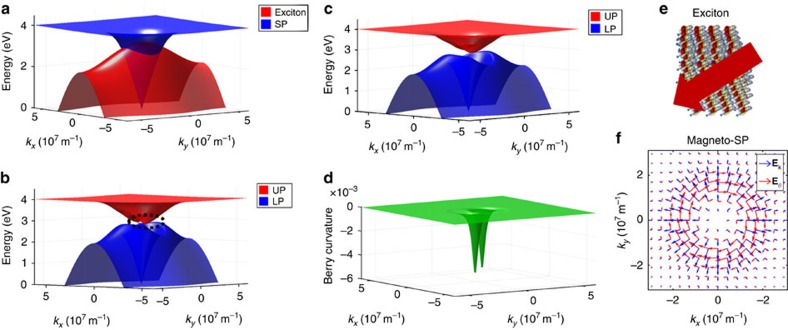Figure 2. Bulk plexciton properties.
Dispersion relations: (a) for SP and exciton (organic layer) modes independently, (b) when they couple in the absence of the MO effect, yielding lower (LP) and upper (UP) plexciton branches, which feature two Dirac cones (dashed black circle), and (c) when they couple in the presence of the MO effect (g=0.3), lifting the Dirac cones. (d) (unnormalized) Berry curvature associated with the LP in c. Physical mechanism for the appearance of plexciton Dirac points: (e) we specialize to nanopillar transitions, which are parallel to the xy plane and (f) plot of magnitude of the electric field of magneto-SP modes as a function of wavevector. In the absence of the MO effect, only the wavevector-parallel components Ek(blue) are present. Thus, the nanopillars experience no coupling with modes whose wavevectors are perpendicular to the transition dipole. Along these directions, degeneracies between the SP and the exciton modes are not lifted, yielding two plexciton Dirac points. Nonzero tangential components Eθ (red) emerge upon inclusion of the MO effect, lifting these degeneracies.

